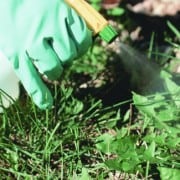14 Signs that you’re Chemically Sensitive
This overview of chemical sensitivity by Dr. Lisa Nagy serves as a helpful introduction; symptoms that may be involved are included.
Environmental toxins can cause medical problems that are difficult for the average doctor to identify and treat. The more severe environmental illnesses include chemical sensitivity, chronic fatigue syndrome (CFS), fibromyalgia and Gulf War Syndrome. Milder, environmentally induced illnesses are all around us and can include anxiety, allergies, autoimmunity, and intolerances to chemicals. Disorders affecting the brain and central nervous system can also occur.
Common Symptoms of Chemical Sensitivity
Some of these symptoms suggested by Dr. William Rea are often experienced by people who have developed chemical sensitivity:
- Allergies and intolerances to new things like clothing stores, foods, pollens, mold;
- Dislike of perfume, diesel exhaust, grocery store detergent aisle, and/or chemicals of all kinds;
- Intolerance to wood or cigarette smoke, air fresheners, tire stores, airplanes;
- Frequent headaches in response to wine, certain foods or smells, newspapers, and mold;
- Red face or nose; dark or puffy eye circles;
- Memory loss, decreased cognition, difficulty concentrating and reading;
- Dysautonomia: blurry night vision, experiencing tired legs after prolonged standing;
- Feeling chilly after eating meals or in grocery stores (check adrenals and thyroid);
- Behavioral and emotional dysfunction: anxiety, confusion, talkativeness, mania;
- Muscle weakness and fatigue (hypoxic mitochondria), exhaustion after physical exertion, chest pain, adrenal and thyroid insufficiency;
- Hypotension, weight loss, stress intolerance;
- Sensitivity to clothing tags itching one’s neck, one’s bra feeling too tight, pain from inflation of blood pressure cuff;
- Sensitivity to light and fluorescent lighting;
- Awareness of cell phone heating up in one’s hand, dislike of sitting near computers, phones, TV, or refrigerators.
(Adapted with permission from Chemical Sensitivity: Tools of Diagnosis and Methods of Treatment by Dr. William Rea.)
Environmental medicine offers specific answers by giving both doctors and patients the tools to treat illnesses caused by toxic exposures. Sadly, very few people learn about environmental medicine until they are on death’s door, as I was.
In 2001, a muscle biopsy showed a my cells lacked oxygen and I was told I was dying from something resembling Amyotrophic Lateral Sclerosis (ALS, often called Lou Gehrig’s Disease). My facial muscles couldn’t produce a smile and I gasped for air all night. I was so weak I could no longer fold a towel or wash my hair. Eventually, my husband, dog, and I developed adrenal failure as well. I was very fortunate to get connected to the Environmental Health Center of Dallas, and to recover. Our household’s illnesses were caused by mold found in the huge aquarium shed attached to my home, which produced dangerous mycotoxins called the “trichothecenes.”
Trichothecenes are commonly found in the urine of sick people living in moldy homes. These toxins are used as bioterrorism agents and have been extensively studied by the Army. The Army has found that female rats exposed to airborne trichothecenes develop adrenal necrosis (death of the gland that makes steroid hormones). In humans, adrenal insufficiency causes health problems including depression, fatigue, allergies, low blood pressure, dizziness on standing, anxiety and intolerance of stress, hypoglycemia, weight loss, tearfulness and increased sense of smell.
A sizable proportion of the U.S. population suffers, often unknowingly, from environmental illnesses. About 15% of the population has been told by a doctor they are chemically sensitive and about 5% are disabled by the condition and cannot be exposed to chemicals such as those found in air fresheners, perfume, and smoke. Fully 30% of elderly and CFS patients are chemically sensitive. Yet, few doctors have learned about chemical sensitivity or CRS or learned how they can be treated with environmental medicine. In my many years of medical training, I never even heard of these environmental illnesses. That’s because the symptoms of environmental illness are not included in either medical school curricula or residency training. To this day, the American Medical Association’s (AMA) 18-year-old policy is that environmental medicine lacks substantiating data and that environmental illness is not a valid diagnosis. My organization is working now to change that policy.
The American Academy of Environmental Medicine has a referral list of physicians on their website: www.aaem.com.
Environmental Medicine, Politics, and Progress
The American Academy of Environmental Medicine trains physicians to assess all potential causes of ill health. The term “environmental illnesses” describes these conditions’ unifying symptoms, as well as hormonal, neurotransmitter, nutritional and genetic abnormalities that cause disease.
A recent study examined cerebrospinal fluid proteins in patients suffering from Gulf War Syndrome, Chronic Fatigue Syndrome, and fibromyalgia, many of whom also showed symptoms of Chemical Sensitivity. The study “found a unique set of proteins” in these patients’ cerebrospinal fluid. The author suggests that, “although the syndrome names are different, the presumed pathologic mechanisms may be shared. Environmental medicine practitioners also suspect that environmental factors affect diseases including Parkinson’s disease, multiple sclerosis, ALS, autoimmune diseases, autism, Tourette syndrome, and attention-deficit/hyperactivity disorder (ADHD).
There has been tremendous and hostile resistance to educating doctors on the dangers of environmental illness and toxic mold, generated mainly by the fields of occupational medicine, public health, allergy, and psychiatry. As a new delegate to the Massachusetts Medical Society (MMS), I introduced a resolution calling for increased awareness about the environmental illnesses and implementation of a one-hour Continuing Medical Education course on Chemical Sensitivity. The resolution received unanimous support after a consensus meeting of five districts—until it was opposed by the occupational medicine and public health committee, whose members appear to believe that environmental illnesses are “just” psychiatric.
Many MMS members told me they have experienced chemical sensitivity symptoms, but fear damaging their careers if they spoke in favor of environmental illness education. In September, I had a discussion with the occupational medicine committee about my resolution. If the resolution passes, I will gain the MMS’ support for reversing the national AMA’s policy on environmental illness.
As a result of my horrific personal experience, I founded the Preventive and Environmental Health Alliance to advance clinical and public awareness of environmental illnesses. I am pleased to have the interest of leadership of the major institutions that need to incorporate changes. We meet in October with directors from the National Institutes of Health (NIH) and the AMA for a groundbreaking discussion of the need for bridging research on environmental toxins (especially mold and mycotoxins) to the clinical practice of Environmental Medicine.
The AMA needs to change its stance and promote a sanctioned specialty (Environmental and Integrative Medicine) to train doctors to correctly identify these diseases. Insurance companies need to expand reimbursement for allergy testing, nutritional assessments, and effective treatments. More research is needed at the NIH and elsewhere on detoxification treatments that work, such as sauna, intravenous vitamins, oxygen therapy, chelation, immune modification, hormone replacement and antigen therapy. This is the preventive medicine of the future.
Lisa Nagy, MD, was recently appointed to the Centers for Disease Control and Prevention’s (CDC) Working Group on the Scientific Understanding of the Effect of Chemicals on Human Health. She is founder and president of the Preventive and Environmental Health Alliance. Dr. Nagy is in practice in Vineyard Haven, Massachusetts.
Adapated with permission from Women’s Health Activist November/December 2009









